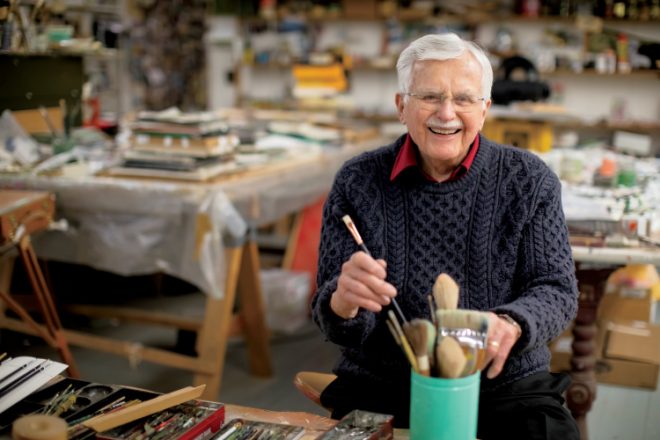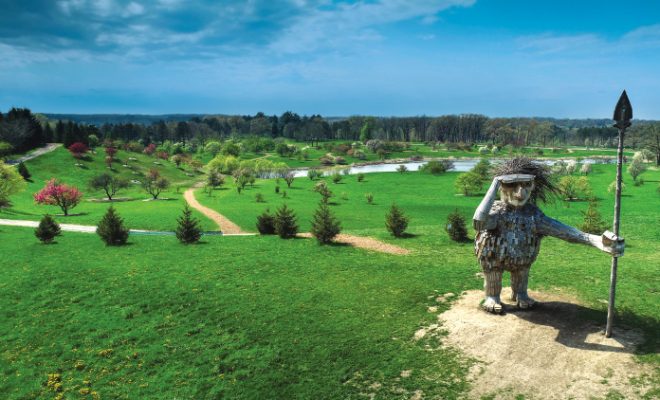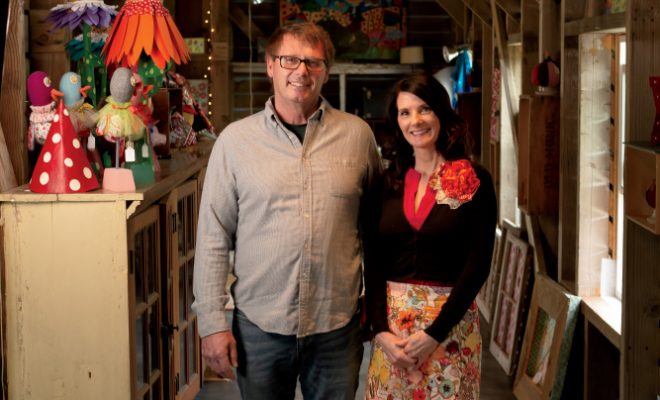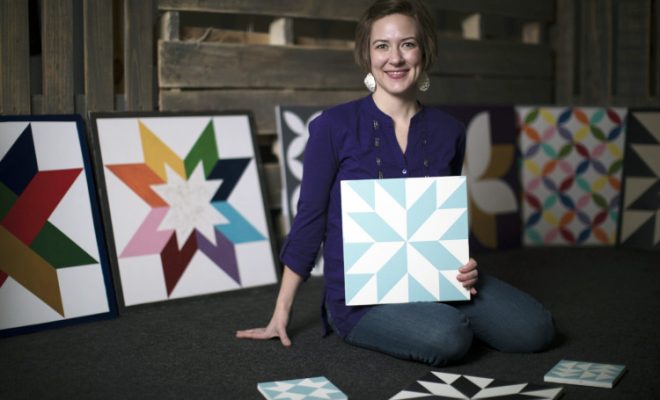
Editor’s note: Harold Gregor passed away on Oct. 8, 2018. We’re including this story as it was originally written as a tribute to the Illinois artist.
Flying into Illinois from California for a job interview in 1970, art professor Harold Gregor peered out of the plane’s window and spotted the fresh subject matter he’d been looking for.
“There it was, the Midwest landscape with the corn growing high. It was very dramatic,” recalls Gregor, who ended up moving there and painting large images of corn cribs.
SEE ALSO: Artist Herb Eaton Finds Inspiration in Illinois Corn
His big break came when he won first place at an art show and the juror told a big-name New York gallery owner about him.
“I got this letter saying they were going to show my work,” Gregor says. “That’s a letter you don’t get very often from any New York gallery.”

In 1972, he painted his first “flatscapes,” aerial perspectives of the state’s farmlands. He has since painted 116 of them, he notes, along with numerous watercolors and acrylics of Constitution Trail and other central Illinois sites. In his second-floor Bloomington studio, he often moves from station to station, working on various types of pieces.
SEE ALSO: Artist Creates Barn Quilt Blocks for People Without Barns
In yet another surprise call, then-senator Barack Obama’s secretary phoned one day to ask if Gregor had any landscape paintings that would fit on a 14-foot wall. President Obama later took the 5-foot-by-7-foot piece with him to the White House, where it hung in his private dining room.
“No living artist is allowed to have work on the first floor of the White House,” Gregor says proudly. “He was breaking the rules to hang my painting.”
While most of his fans are not so well-known, they often tell Gregor how his art has helped them appreciate the natural landscapes they see as they drive along Interstate 55.
“That’s really a compliment,” he says. “It’s wonderful that you can change somebody’s view of their perceived world.”





I was fortunate to have been a student of Harold’s in the early ’60’s at San Diego State. He was my first and only teacher who made sense to me, and I have had many. He understood and passed on information to us about color organization, figure ground etc. that changed my work for the better, and my understanding of the work I saw in museums and galleries for the rest of my life. He was a patient fellow, but once I irritated him with my complacency, and his words were important. “Yes, you can do that.” he said staring down at my drawing. “So what?’ Ouch, but sometimes people are lucky enough to get the kick in the pants they need.